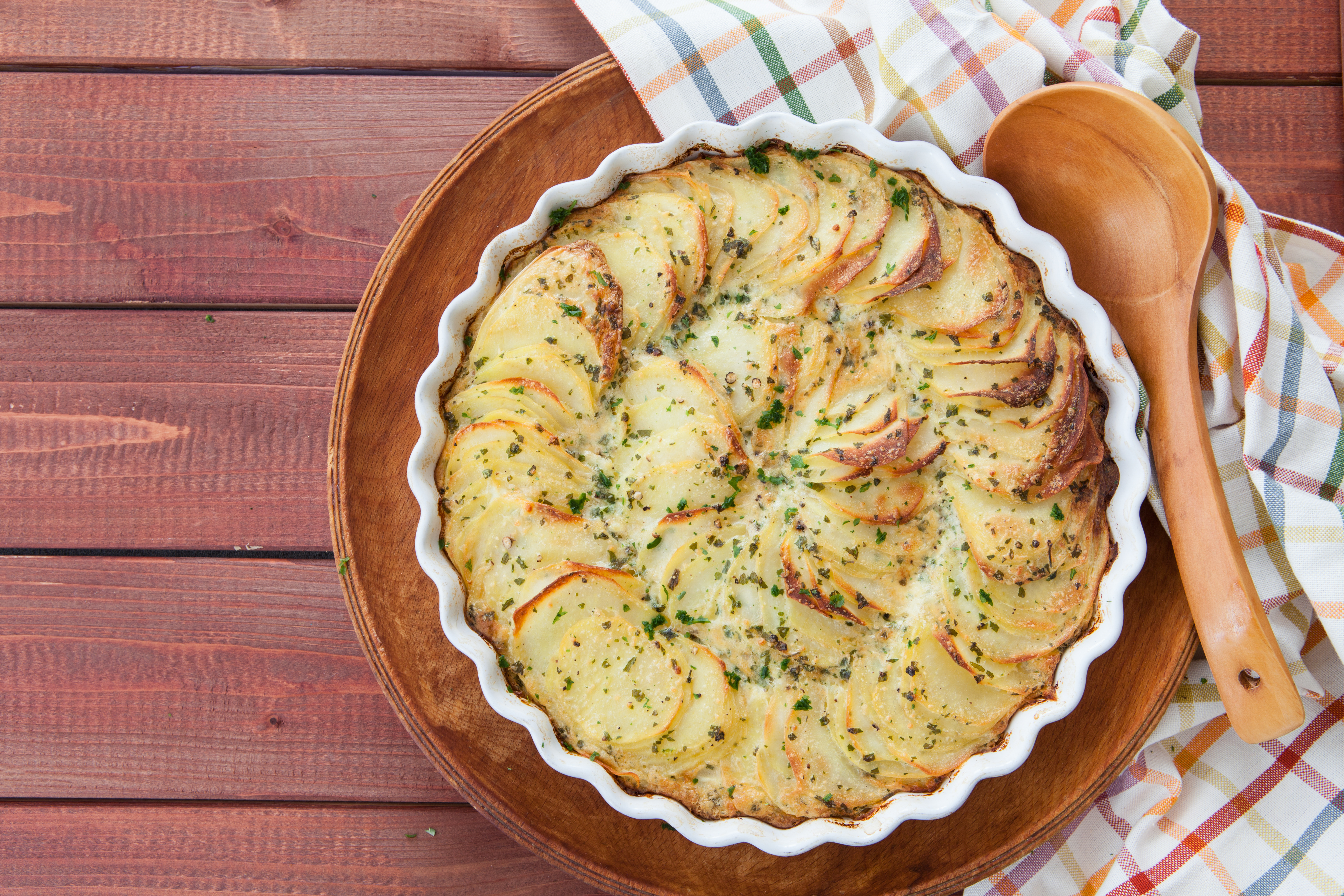1. First up make sure you choose the right potato variety – Ben says, “You want a starchy and floury variety that will help thicken the cream and make it more unctuous,” so the King Edward is his favourite to use.
2. To make your dauphinoise stand out from the rest you need to have the richness of the creamy sauce that is thickened by the starchy potatoes, but have enough flavour to embellish the cream too. To do this Ben starts with butter and sautés garlic in the pan, then adds chopped ‘hard herbs’ – rosemary, thyme and sage that will infuse slowly and gently.
3. Next the ratios of milk to cream are key – Ben recommends 3:2, and uses three parts double cream and two parts milk, mixing enough to almost cover your potatoes. He then grates in a little nutmeg.
4. Controversially Ben doesn’t peel his potatoes. He says, “The potato skin brings extra flavour, fibre, texture and gives the final dish that bit more crunch." Just give them a wash and a scrub to remove any dirt.
5. Ben recommends slicing your potatoes in a food processor to get the perfect cut for those iconic layers in a fraction of the time.
6. To give the sauce the smooth texture Ben blends it in a food processor to ensure all the herbs are fully incorporated, he then salts it “as salty as the sea” (because the potatoes are not seasoned and like sponges) and adds some pepper and a zest of lemon. Crucially Ben then leaves the sauce to cool so it doesn’t cook the potatoes when mixed in with them.
7. To get the potatoes fully coated in the sauce Ben uses a huge bowl – the biggest you can find to literally ‘bathe’ the potatoes in the sauce, and separating each individual slice.
8. Once fully coated, ‘shuffle’ the potatoes together like cards and stand them up in the dish – hasselback style. They should be packed in as tightly as possible with any gaps filled in.
9. Pour the cream mixture over the top making sure every potato is coated in the mixture. Cover the dish with foil and put in the oven at 200°C for 30 minutes, then remove the foil and cook for ten more minutes.
10. Finally, always put the dish on a tray to catch any sauce overspill – and avoid mess in your oven!


